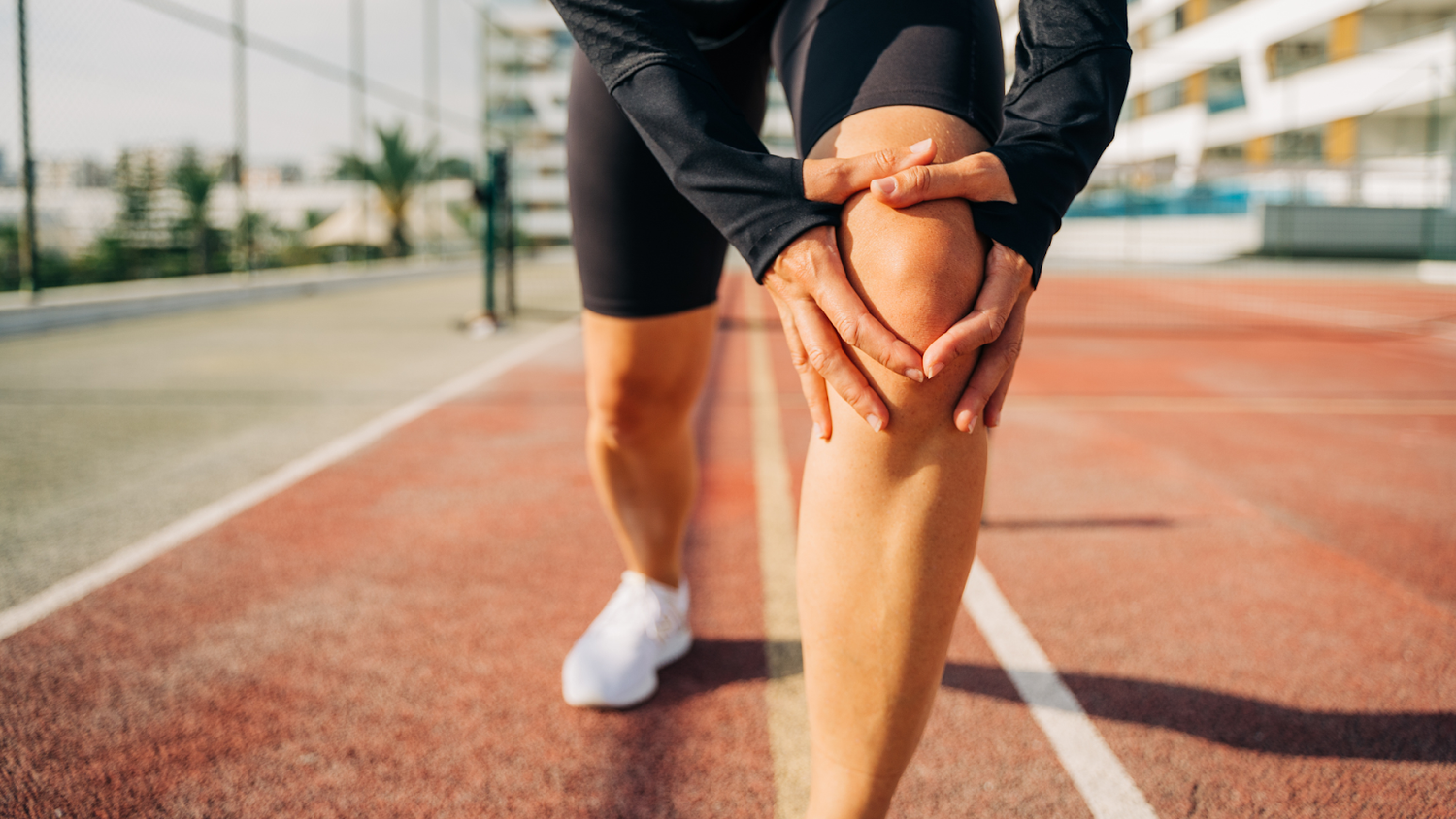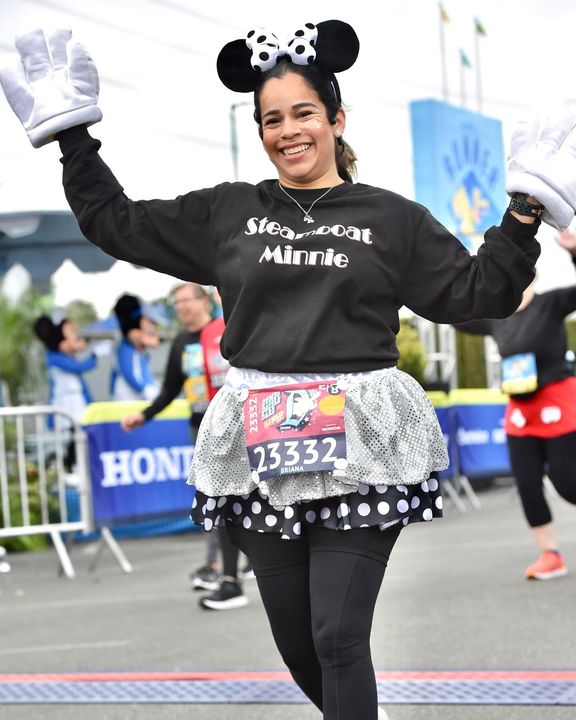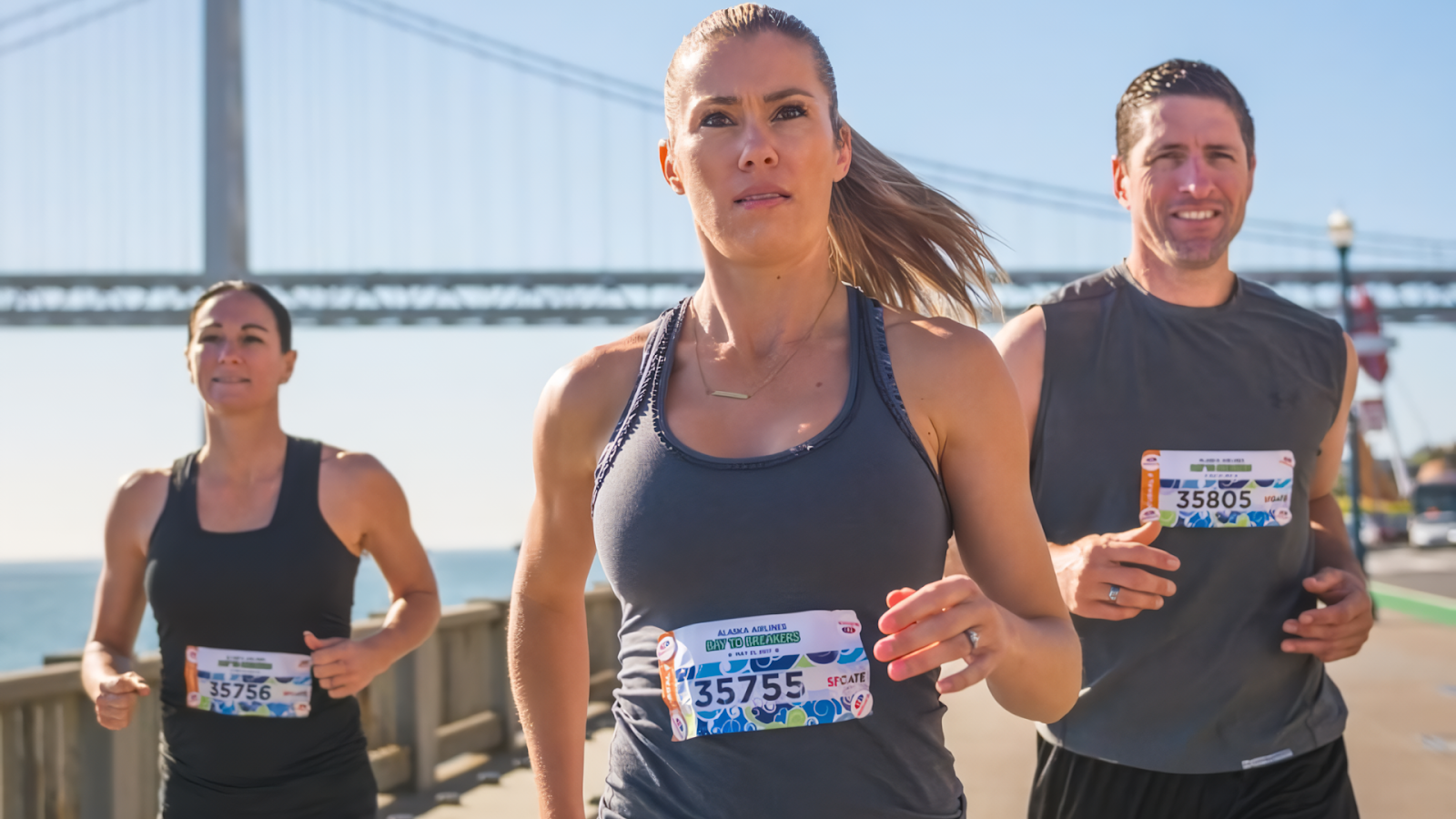Key Takeaways:
- Early Signs Help Prevent Runner’s Knee: Runner’s knee shows up as a dull ache around the kneecap, especially during activities like running or climbing stairs. Noticing these signs early can help stop it from getting worse.
- Strong Muscles and Good Shoes Make a Big Difference: Weak muscles or worn-out shoes can lead to runner’s knee. Strengthening the muscles around your knee and wearing supportive shoes can prevent strain and pain.
- Smart Training Habits Keep Your Knees Healthy: Increase your running gradually, add rest days, and try cross-training activities like cycling or swimming to avoid overworking your knees and keep running pain-free.
At BibBoards, we don’t just understand the runner's lifestyle — we’re committed to supporting it with products designed to keep you moving forward. With innovative solutions like our pin-free, secure bib fasteners, we help runners focus on the finish line rather than gear issues.
Are knee pains slowing down your running goals? Runner’s knee, a common ailment among runners, can be an unexpected obstacle, affecting casual joggers and marathon enthusiasts.
This piece will explain what runner’s knee is and share practical strategies for prevention. You'll find essential tips to keep your knees healthy and your runs pain-free.
Understanding Runner’s Knee
Runner’s knee, clinically known as patellofemoral pain syndrome, is a prevalent issue that many runners experience as pain around the kneecap. This discomfort often flares up during activities like running, squatting, or walking, especially on inclines or stairs. At its core, runner's knee is typically the result of stress on the knee joint, misalignment, or repetitive impact on the joint, leading to inflammation and discomfort.
Understanding runner’s knee requires examining how individual body mechanics, such as gait and joint alignment, contribute to knee strain over time. Factors like training intensity, improper footwear, or lack of cross-training can also exacerbate the condition. By recognizing these influences, runners can identify preventive strategies to keep their knees healthy and performance consistent.
To keep your focus on training without unnecessary distractions, consider BibBoards for a secure and sustainable way to attach your race bib. These innovative fasteners eliminate the need for safety pins, helping you stay comfortable and protecting your gear as you prioritize knee health and performance.

Causes Behind Runner’s Knee
Understanding the causes of runner’s knee is essential for prevention and treatment. Various factors, from training intensity to footwear, can contribute to knee strain, leading to this common runner’s issue. Let’s break down these causes further:
Biomechanics And Misalignment
When the kneecap doesn’t align properly with the thigh bone due to weak hip or thigh muscles, it places uneven pressure on the knee joint. This misalignment can cause wear on the cartilage beneath the kneecap, leading to pain over time. Strengthening muscles around the knee can help balance alignment and reduce strain.
Overtraining And Lack Of Recovery
Pushing through high mileage without adequate recovery can easily lead to knee strain. Overtraining stresses the knee joint, making it more susceptible to pain and injury, especially in runners who add distance or intensity too quickly. Giving the body time to repair between runs is essential for joint health.
Improper Footwear
Footwear lacking support and cushioning doesn’t absorb shock well, amplifying knee stress with each step. Shoes worn out or unsuited to your gait may worsen alignment issues, increasing the risk of runner’s knee. Investing in quality shoes that match your running style is crucial for knee protection.
Running Surfaces And Terrain
Running on hard surfaces or uneven terrain can increase the impact on the knee joint, leading to strain and potential injury. Hills add additional force on the knees, especially during downhill runs when the joint bears more weight. Switching up running surfaces or opting for softer terrain can alleviate this pressure.
Common Symptoms Of Runner’s Knee
Recognizing the symptoms of runner’s knee is critical to addressing it early. Symptoms typically involve discomfort around the knee, especially during or after physical activity, and can intensify over time if left untreated. Here’s a closer look at the most common signs:
- Pain Around or Behind the Kneecap: Runner’s knee often manifests as a dull, aching pain around or directly behind the kneecap. This discomfort may worsen during activities involving knee bending, such as running, squatting, or climbing stairs. Pain may persist even at rest, signaling inflammation around the joint.
- Swelling or Tenderness: Another common symptom is swelling or a feeling of tenderness around the knee. This can arise from irritation of the knee's tissues, often due to repetitive stress. Runners may notice puffiness or warmth around the area, indicating inflammation that needs attention.
- Popping or Grinding Sensation: Some runners experience a popping, grinding, or clicking sensation when bending the knee. This sensation is often linked to cartilage wear or joint misalignment, which can cause friction within the knee. Ignoring these signs can worsen the condition and lead to increased pain.
Preventive Strategies For Runner’s Knee
Preventing runner’s knee involves a mix of mindful training habits, proper equipment, and strengthening exercises. Implementing preventive strategies can help runners avoid pain and extend the longevity of their running careers. Here are effective methods to keep knee pain at bay:
Gradual Training Increases
Increasing running mileage or intensity gradually helps reduce strain on the knees. Sudden increases in activity can overwork the knee joint, leading to pain and inflammation. Following the "10% rule" — increasing mileage by no more than 10% each week—is a reliable method for preventing overuse injuries.
Prioritizing Cross-Training
Incorporating cross-training exercises like cycling, swimming, or strength training can help to reduce the impact on the knees. These activities build overall strength and flexibility without placing too much strain on the joints. Cross-training also helps prevent muscular imbalances that can contribute to knee pain.
Practicing Good Running Form
Maintaining proper running form—keeping knees slightly bent, landing softly, and avoiding over-striding — minimizes knee stress. Good form helps distribute impact forces more evenly, which protects the joints. Paying attention to posture and stride can also improve performance while reducing injury risk.
Strengthening Knee-Supporting Muscles
Strengthening muscles around the knee, such as the quadriceps, hamstrings, and hip muscles, can improve joint stability and alignment. Stronger muscles reduce knee strain by absorbing more impact, helping to prevent overuse injuries. Simple exercises like lunges, squats, and leg raises can build the muscle support runners need.
Regular Stretching Routine
Stretching before and after running maintains flexibility in the knee-supporting muscles, decreasing the likelihood of strain. Key stretches focus on the hamstrings, quads, and calves, which support the knee’s range of motion. Consistent stretching prevents tightness, which can misalign the joint and increase injury risk.
Rest And Recovery Days
Allowing time for recovery between runs is essential to prevent cumulative stress on the knees. Rest days will enable the body to repair minor strains and reduce inflammation, preserving joint health. Incorporating at least one day off each week can greatly benefit runners prone to knee issues.
Treatment Options For Runner’s Knee
Effective treatment for runner’s knee combines rest, targeted exercises, and potential medical intervention for more severe cases. Here’s a breakdown of approaches that can help alleviate pain and support recovery:
Rest And Activity Modification
Resting and reducing high-impact activities give the knee time to heal. Swapping out running for low-impact exercises like swimming or cycling helps maintain fitness without straining the joints. Taking breaks from intense workouts is crucial in reducing inflammation and allowing recovery.
Physical Therapy And Strength Exercises
Physical therapy can improve knee alignment and strengthen surrounding muscles to support recovery. Therapists often focus on exercises in the quadriceps, hips, and glutes to stabilize the knee joint. These exercises, like wall sits and leg raises, provide gradual, controlled support for healing.
Pain Management Techniques
Icing, compression, and anti-inflammatory medications help reduce pain and swelling in the early stages of recovery. Applying ice packs for 15-20 minutes can alleviate inflammation after physical activity. Over-the-counter medications may also be recommended to manage discomfort during recovery.
Tips For Maintaining Healthy Knees As A Runner
Maintaining healthy knees as a runner requires consistent care and smart training strategies. Taking a proactive approach can keep knees strong and reduce the risk of injury:
- Warm Up Before Running: Warming up before a run helps prepare the muscles and joints, reducing the risk of strain. Light dynamic stretches like leg swings, lunges, and high knees improve blood flow and flexibility. This prep is essential for supporting knee movement and avoiding injury.
- Incorporate Strength Training: Building strength in the hips, thighs, and calves helps reduce knee stress by improving alignment and stability. Exercises like squats, lunges, and leg presses reinforce muscles that support knee health. Regular strength training can lower the risk of common running injuries.
- Listen to Your Body: Paying attention to early signs of pain or discomfort in the knees is crucial. If knee pain arises, reducing intensity or resting helps prevent the issue from worsening. Consistently monitoring your body's feelings allows adjustments to maintain a healthy running routine.
- Maintain a Balanced Training Schedule: Alternating between running, cross-training, and rest days gives your knees time to recover from the impact. Balanced schedules reduce overuse, which is a primary cause of knee pain. Cycling, swimming, or elliptical workouts can enhance fitness while sparing the joints.
- Use Supportive Footwear: High-quality, supportive shoes suited to your gait and running surface minimize knee strain. Replacing shoes every 300-500 miles ensures adequate cushioning, which is essential for impact absorption. Consulting a specialist to find the right shoe for your foot type is a valuable investment in knee health.
- Stay Hydrated: Proper hydration supports joint lubrication, reducing friction and wear. Dehydration can lead to muscle tightness, increasing the risk of knee injury. Staying hydrated before, during, and after runs keeps your muscles and joints primed for movement.

Final Thoughts
Runner's knee is a reminder of the physical demands that running places on the body and the importance of taking proactive steps to protect it. Embracing practices like cross-training, gradual mileage increases, and using supportive footwear isn’t just about preventing pain—it's about fostering a sustainable and enjoyable running journey. By understanding how factors like biomechanics, training habits, and recovery contribute to knee health, runners can take charge of their own well-being and make choices that support longevity in the sport.
Approaching knee care with intention improves physical performance and enhances mental resilience. The awareness and discipline involved in preventing runner's knee empower runners to train smarter, respecting their body’s limits while pushing for growth. With the right strategies, every run can achieve a stronger, more balanced, and injury-free experience on the road or trail.
Frequently Asked Questions About Runner's Knee
What is runner’s knee?
Runner’s knee, or patellofemoral pain syndrome, is a condition where pain occurs around or behind the kneecap, often due to misalignment or repetitive stress on the knee joint. It’s commonly experienced by runners and athletes who perform high-impact exercises.
How does runner’s knee feel?
Runner’s knee usually feels like a dull, aching pain around the kneecap, especially during knee-bending activities like running, squatting, or climbing stairs. If left untreated, the pain may persist even during rest.
Who is most at risk for runner’s knee?
Runners, athletes, and those involved in high-impact sports are most at risk, particularly if they suddenly increase their training intensity. Weakness in supporting muscles or improper running form can also increase susceptibility.
What causes runner’s knee?
Runner’s knee can result from improper knee alignment, weak hip or thigh muscles, overtraining, or wearing unsupportive footwear. High-impact surfaces or uneven terrain can also exacerbate knee strain.
Can footwear impact runner’s knee?
Yes, footwear lacking adequate cushioning or arch support can increase stress on the knee joint. Worn-out or unsuitable shoes can worsen alignment issues, making runner’s knee more likely.
How can cross-training help prevent runner’s knee?
Cross-training, such as cycling or swimming, strengthens muscles without repetitive knee impact, reducing strain on the knee joint. This variety helps maintain knee health and improve overall performance.
Is rest essential for recovering from runner’s knee?
Rest is vital for allowing the knee to heal, as it reduces inflammation and prevents further joint stress. Without adequate rest, knee pain may persist or worsen over time.
Are knee braces effective for runner’s knee?
Knee braces can offer temporary support and stability, helping to manage pain during movement. However, they work best when combined with strengthening exercises to provide long-term relief.
What are some exercises to prevent runner’s knee?
Strengthening exercises like lunges, squats, and leg raises build muscle around the knee, which improves alignment and absorbs impact. Regular strength training can help prevent overuse injuries and maintain joint health.
Should I change my running surface to prevent knee pain?
Running on softer surfaces, like grass or trails, can reduce knee impact, especially compared to harder surfaces like concrete. Switching up surfaces occasionally may help alleviate joint strain and prevent knee pain.




Leave a comment
This site is protected by hCaptcha and the hCaptcha Privacy Policy and Terms of Service apply.